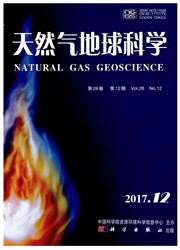

 中文摘要:
中文摘要:
塔里木盆地下古生界碳酸盐岩经历大气降水的地表岩溶、有机流体的埋藏溶蚀、深部岩浆热液流体的热液溶蚀等多种类型的次生溶蚀改造作用。以塔河油田为例,奥陶系碳酸盐岩在加里东中期、海西早期和海西晚期经历3次强烈的地表岩溶作用,分别在塔河油田西部和南部、塔河主体区以及塔河地区西北部发育。受加里东期、晚海西期、喜马拉雅期油气充注成藏影响,碳酸盐岩在有机流体作用下发生多次埋藏溶蚀作用,叠加在早期已有储集空间之上,在塔河地区奥陶系一间房组尖灭线以南的碳酸盐岩中较为发育。伴随海西晚期(二叠纪)强烈而广泛的岩浆一火山活动,深部热液流体也异常活跃,使碳酸盐岩发生显著的溶蚀改造作用,主要发育在塔河地区西部和西南部且叠加在早期已有储集空间之上。由此可以看出,碳酸盐岩储集空间的发育并不是在单一机制短期作用下形成的,而是多种流体作用复合叠加、长期动态发育的结果。
 英文摘要:
英文摘要:
The lower Paleozoic carbonate in the Tarim basin experienced many kinds of secondary dissolution, such as surface dissolution by atmospheric eluviation,burial dissolution by organic fluid, surface karst by meteoric water,hydrothermal alteration by magmaassociated hydrothermal fluid,and so on. Taking the Tahe oilfield as an example,the Ordovician carbonates experienced three periods of strong surface karst at the middle Caledonian period in the west and north of Tahe oilfield,early Hercynian in the main block,and later Hercynian in the northwest part, respectively. Under the action of hydrocarbonfilling at the periods of Caledonian,later Hereynian and Himalayan, several time of burial dissolution were taken to the carbonates by organic fluid. The burial dissolution mainly developed to the south of the 02yj distinction line, and the space of carbonate reservoir acted by burial dissolution was overlaid to the earlyformed one. Since the extensive magmaticvolcanic activities at the later Hercynian period (Permian) made the deep hydrothermal active,the hydrothermal alteration dissolved the carbonates remarkably. The hydrothermaldissolved pores stacked on the previously existing reservoir space in the west and southwest of the Tahe oilfield. Therefore,the high quality of carbonate reservoir was formed rather by one single fluid than the composition of multiple dissolutions in a long-time dynamic process.
 同期刊论文项目
同期刊论文项目
 同项目期刊论文
同项目期刊论文
 期刊信息
期刊信息
